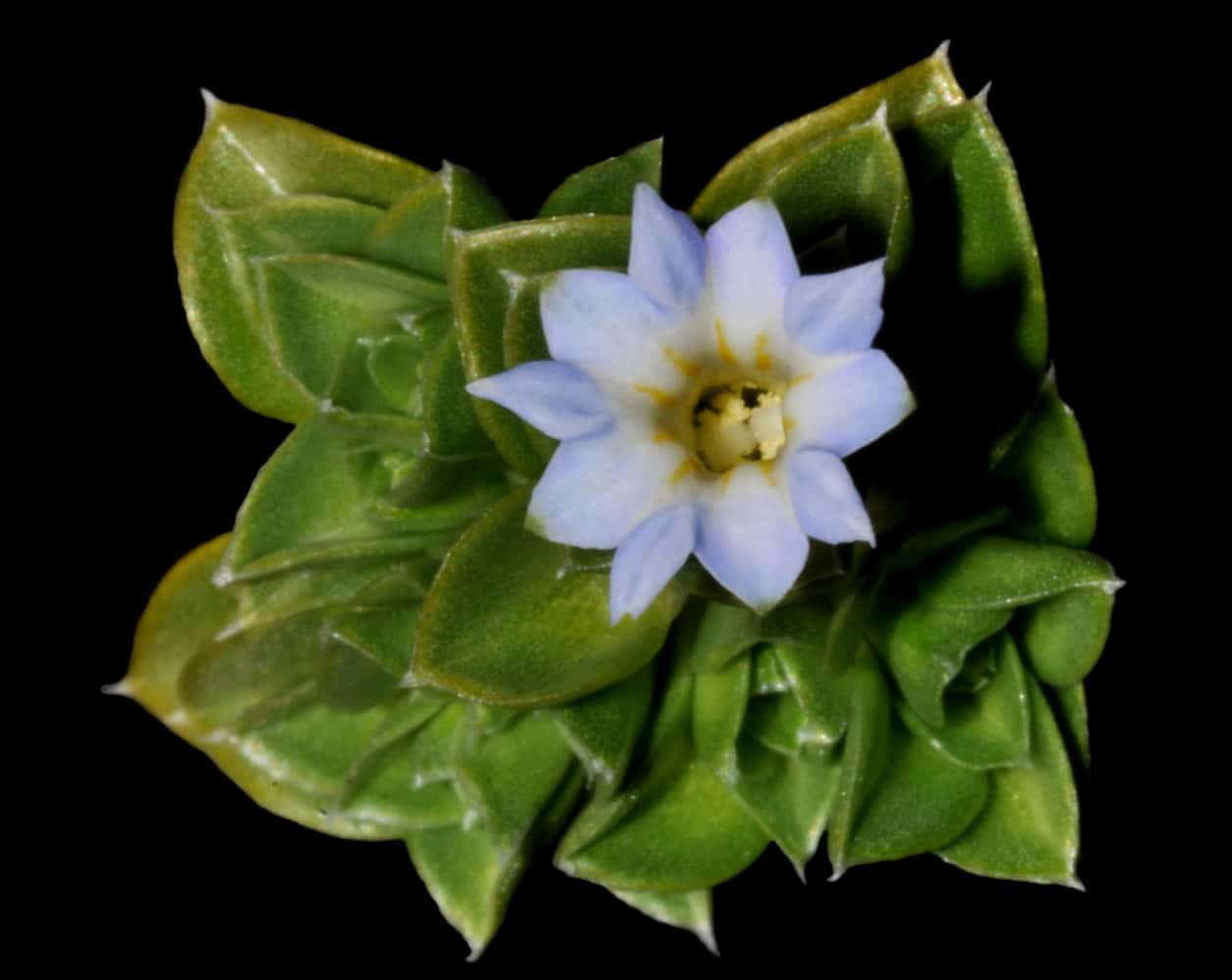A new species of plant has been discovered recently in a remote part of Costa Rica high in the mountains. Gentiana bicentenaria is the name of the small delicate grass discovered in the Talamanca mountain range.
A study on the new species has been published by researchers Armando Estrada from the National Museum of Costa Rica and Alexander Rojas who is a professor at the National University. They have been collecting examples of this species that is native to Costa Rica since 2016.
Their research was carried out as part of a documentation effort funded by the National Museum of Costa Rica. This was created to explore the unique Costa Rican biodiversity to aid current and future research by national and international scientists. Specimens of Gentiana bicentenaria are kept in the National Herbarium of Costa Rica for research purposes.
A New Species
These plants are characterized by their small size, typically just 2 cm across, with spatula-shaped closely overlapping light green leaves. When the plant is in season, it has just one flower with bluish-white petals and yellow stripes on the inside.
The flower is the highest part of the tiny plant when it is in bloom between December and March. The flower then falls away to reveal the fruit between March and July.
This new species of plants thrive in very damp conditions. They are typically found at the edge of streams, or in very moist areas of moorland. The reason these plants have not been discovered before very recently, was not only because of their small size, but also because of their remote habitat.
Where is Gentiana Bicentenaria Found?
In the Chirripo National Park, on the highest mountain in Costa Rica, Cerro Chirripo, this new plant was discovered. Cerro Chirripo is 3,821 meters high, and Gentiana bicentenaria is only found above 3,000 meters. Cerro Chirripo is the highest mountain in Costa Rica and also the location of one of the national symbols of the country; the Crestones.
The ecosystem above 3,000 meters is known as the paramo region. This is an area above the highest forests but below the permanent snowline. Scientists consider the paramos to perhaps be one of the fastest evolving ecosystems on the planet.
The ecosystem where it grows is fragile and at risk, however. The habitat is grassy moors on the banks of streams, and on flooded land that is covered in a layer of moss. In these select areas, the plants can grow relatively abundantly.
Where Does the Name Come From?
The name Gentiana bicentenaria was coined by researchers because it is small but beautiful, just like Costa Rica, the only place it is found in the world. The discovery of this plant also coincides with the bicentennial anniversary of Costa Rica, and bicentenaria is Spanish for bicentennial. The species is part of the Gentiana genus that makes up the rest of the name.
There are around 450 species in the Gentianaceae family of plants. Gentiana is the most common genus within this family that are more commonly found in temperate regions in North America, Europe, and Asia. The smaller number of species found in tropical locations are typically located at high elevations, which is also the case with Gentiana bicentenaria.
Armando Estrada, from the National Museum, has said that the name of the plant is an opportunity to celebrate the country they live in and the 200 hundred years since they gained independence.
Examples of the Gentiana bicentenaria plants were shown to the President of Costa Rica, Carlos Alvarado, and the first lady, Claudia Dobles, on a recent visit. They praised the research carried out by scientists of both the National University and the National Museum in their discovery of this new species. The President of the republic called it an honor for Costa Ricans that these unique species have been discovered and named after the bicentennial.







